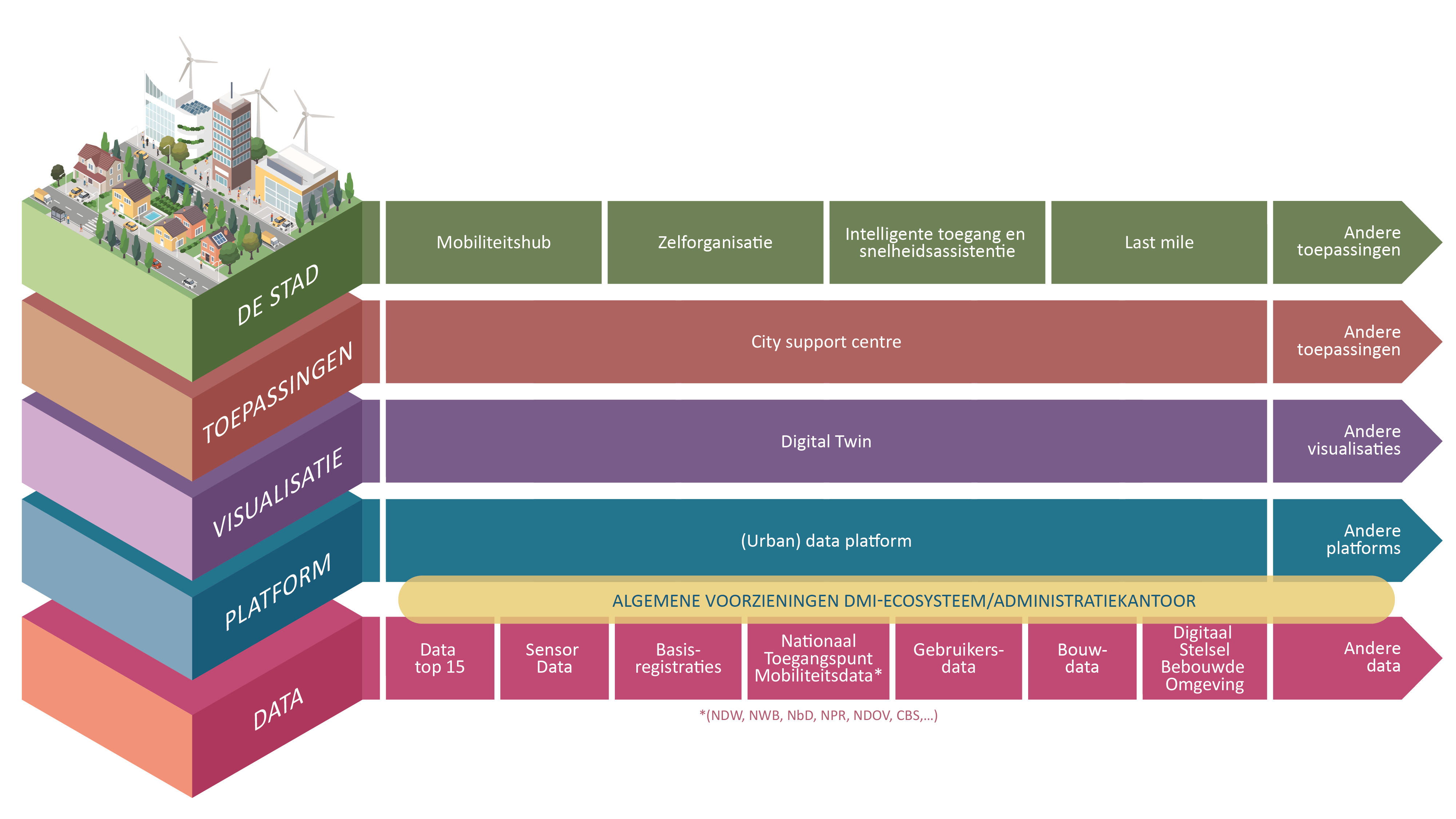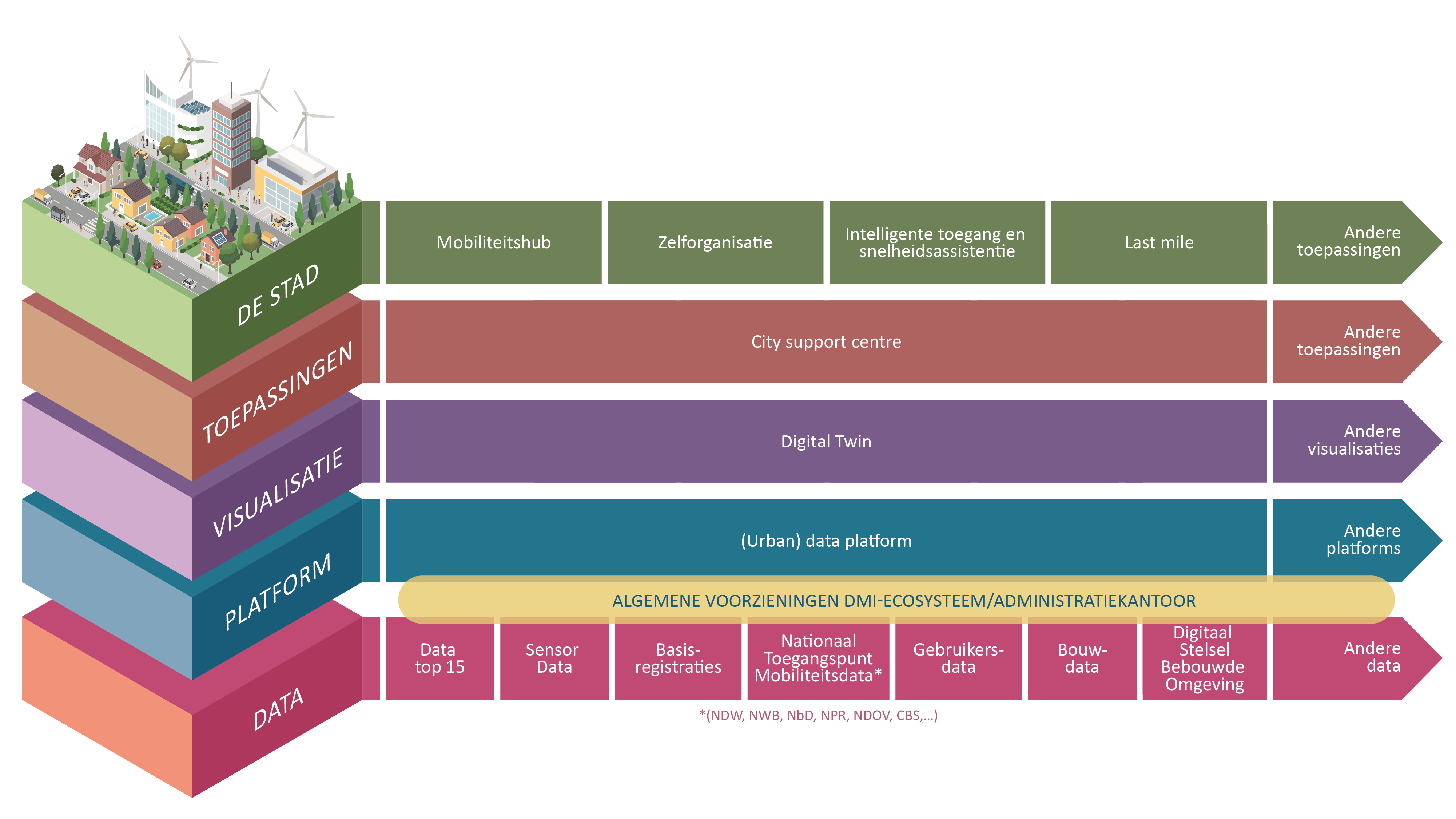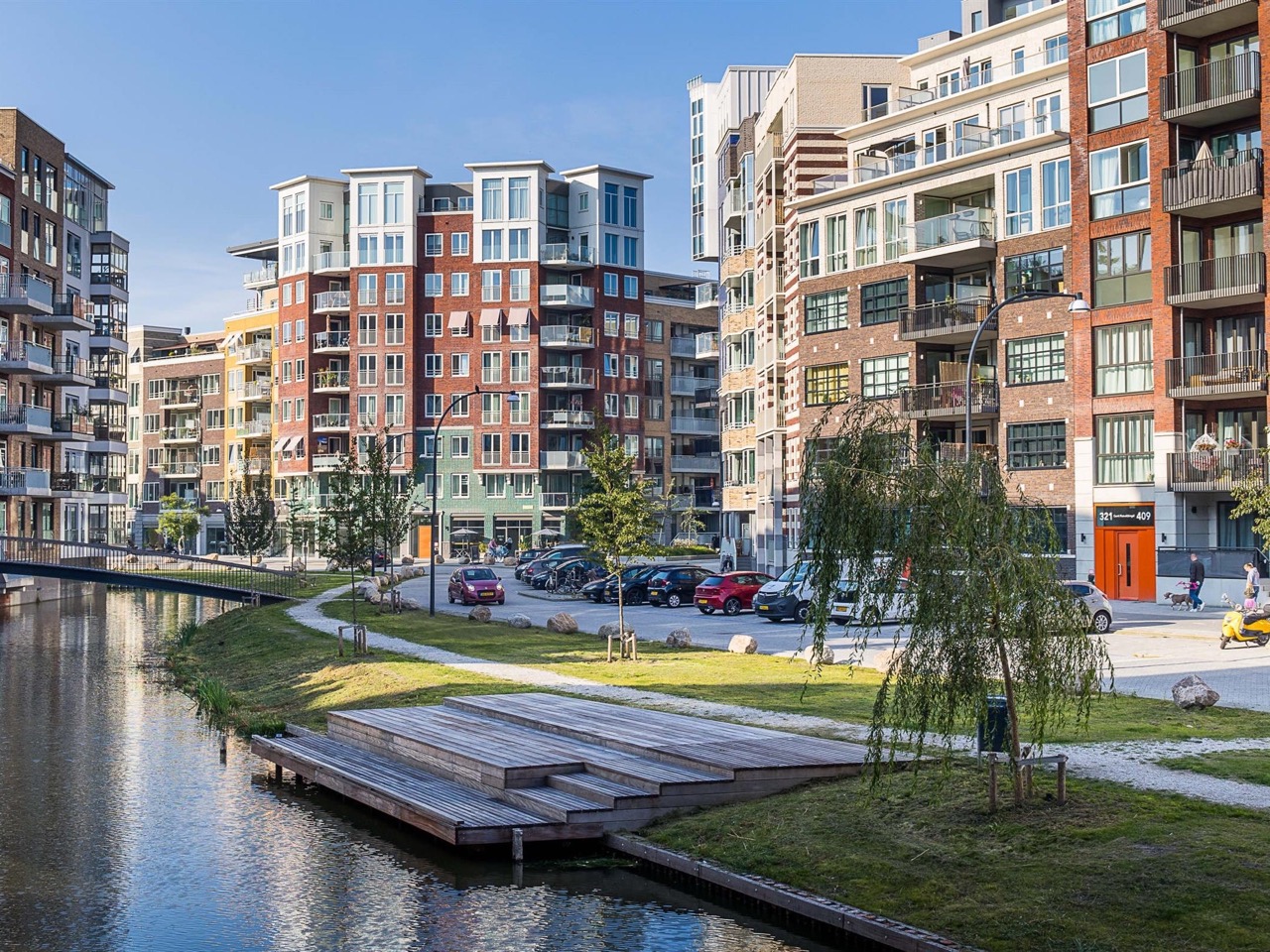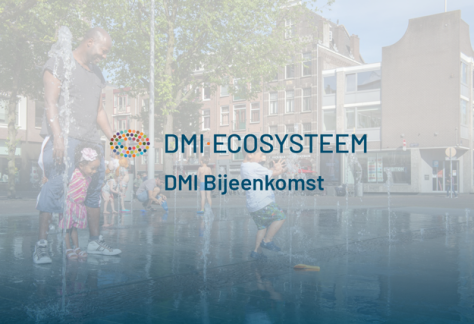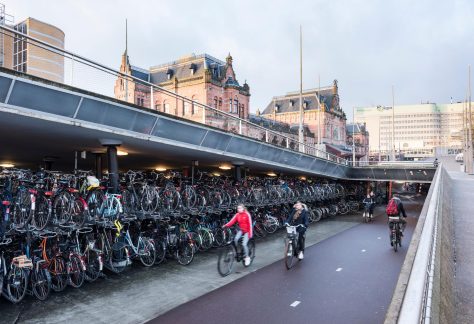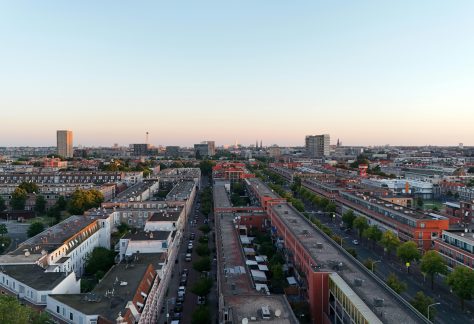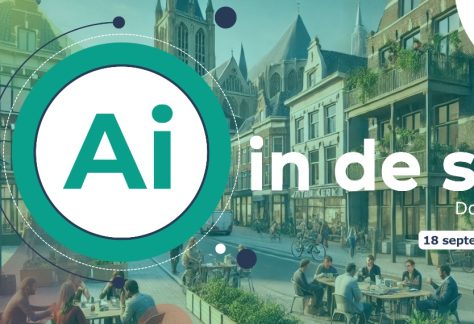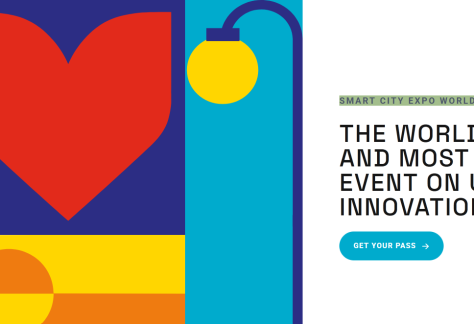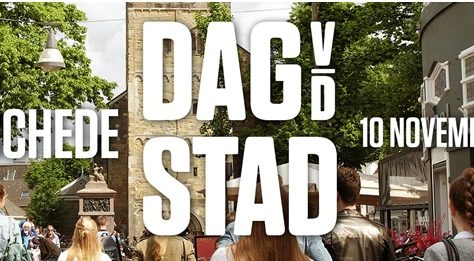Functioning DMI-ecosystem.
As a municipality, you ideally make policy based on data. But raw data is not suitable to base choices on: that data must first be translated into understandable and relevant information. The image above shows the successive steps to get from data to usable information. Within the DMI-ecosystem, we ensure that each supplier on each layer can more easily collaborate with suppliers on adjacent layers. And that multiple suppliers can act on each layer. One way we do this is through the Appointment System.
Thus, we provide scalable standards-based solutions so that every city can quickly and easily use the right solutions.

